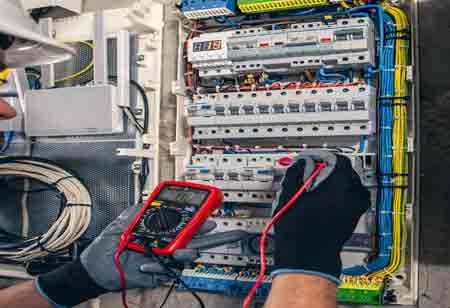Thank you for Subscribing to Electrical Business Review Weekly Brief
I agree We use cookies on this website to enhance your user experience. By clicking any link on this page you are giving your consent for us to set cookies. More info
Electrical Testing: Bridging Tradition and Innovation
Advancements such as automation, innovative technology, and portable devices advance precision, efficiency, and sustainability- all well-suited to safety and resilience in electrical systems.

By
Electrical Business Review | Friday, August 01, 2025
Stay ahead of the industry with exclusive feature stories on the top companies, expert insights and the latest news delivered straight to your inbox. Subscribe today.
Fremont, CA: Electrical testing is undergoing a fundamental transition in a period of rapid technological progress. This domain's innovations increase testing accuracy and efficiency while also responding to the rising complexity of modern electrical systems. The significance of innovation in these domains cannot be emphasized as industries change and require increasingly complex solutions.
Integrating digital technologies and automation in electrical testing would have the main advantages of efficiency and reliability. Traditional methods involved a lot of manual intervention and were prone to human error and inefficiency. The automated test system uses advanced algorithms and data analytics to get very accurate and fast results in testing, reducing the time taken for testing and improving the results. One of the most significant advantages is the continuous monitoring of electrical systems with real-time diagnostics and proactive maintenance.
Intelligent sensors and IoT technology have transformed how electric systems are monitored and tested. With the real-time collection of vast data volumes, it is possible to review the performance and condition of electrical systems. This resource allows engineers to pinpoint problems before they grow into major ones, leading to increased safety and lower operational costs. With IoT integration with electrical testing, further remote testing possibilities have been opened. Therefore, technicians can carry out assessments literally from anywhere.
Portable testing device developments are significant breakthroughs that allow technicians to test in various environments, such as remote areas. These portable, user-friendly devices can have advanced features such as wireless connectivity, transferring data anywhere, and analyzing it in real time. In an industry like construction, on-site testing is essential to ascertain safety standards and regulations.
Advances in simulation technology have transformed the nature of electrical testing. Virtual simulation tools within controlled environments allow engineers to model and test electrical systems before their implementation in the real world. This methodology saves considerable time and resources while reducing risks in case of system failure. Simulation technology has proven invaluable in renewable energy, where many technologies must be integrated, which challenges scientists to test complicated systems comprehensively.
Beyond these technological advances, the electrical testing industry stresses much greater sustainability. In light of increased world awareness of grave environmental issues, there is much pressure to clean up the approach to testing and practice. This includes using renewable energy sources to power testing equipment and developing methods of testing that entail minimal waste. Companies find that sustainable practices make sense environmentally, can save money, and enhance a firm's corporate responsibility.








